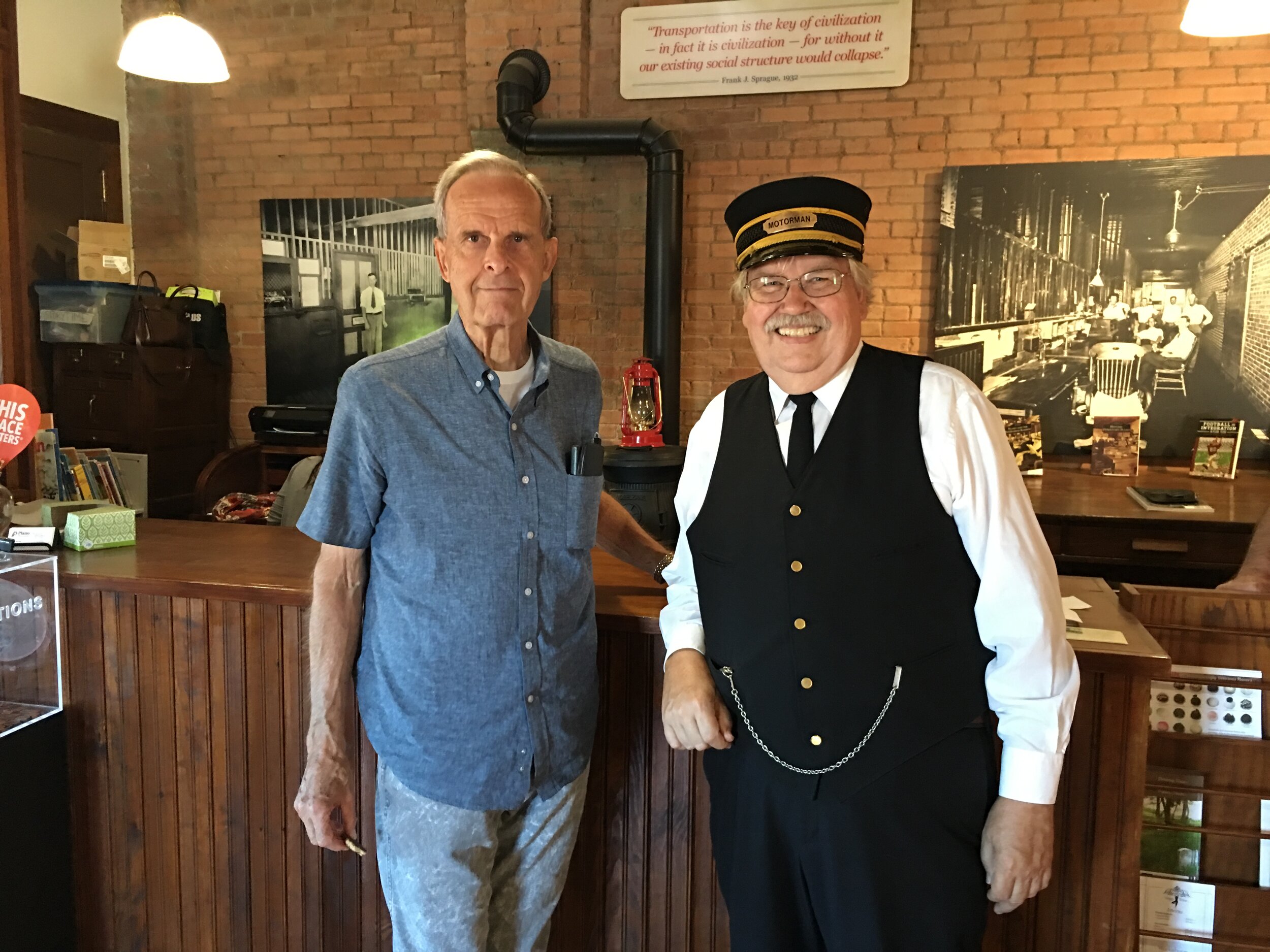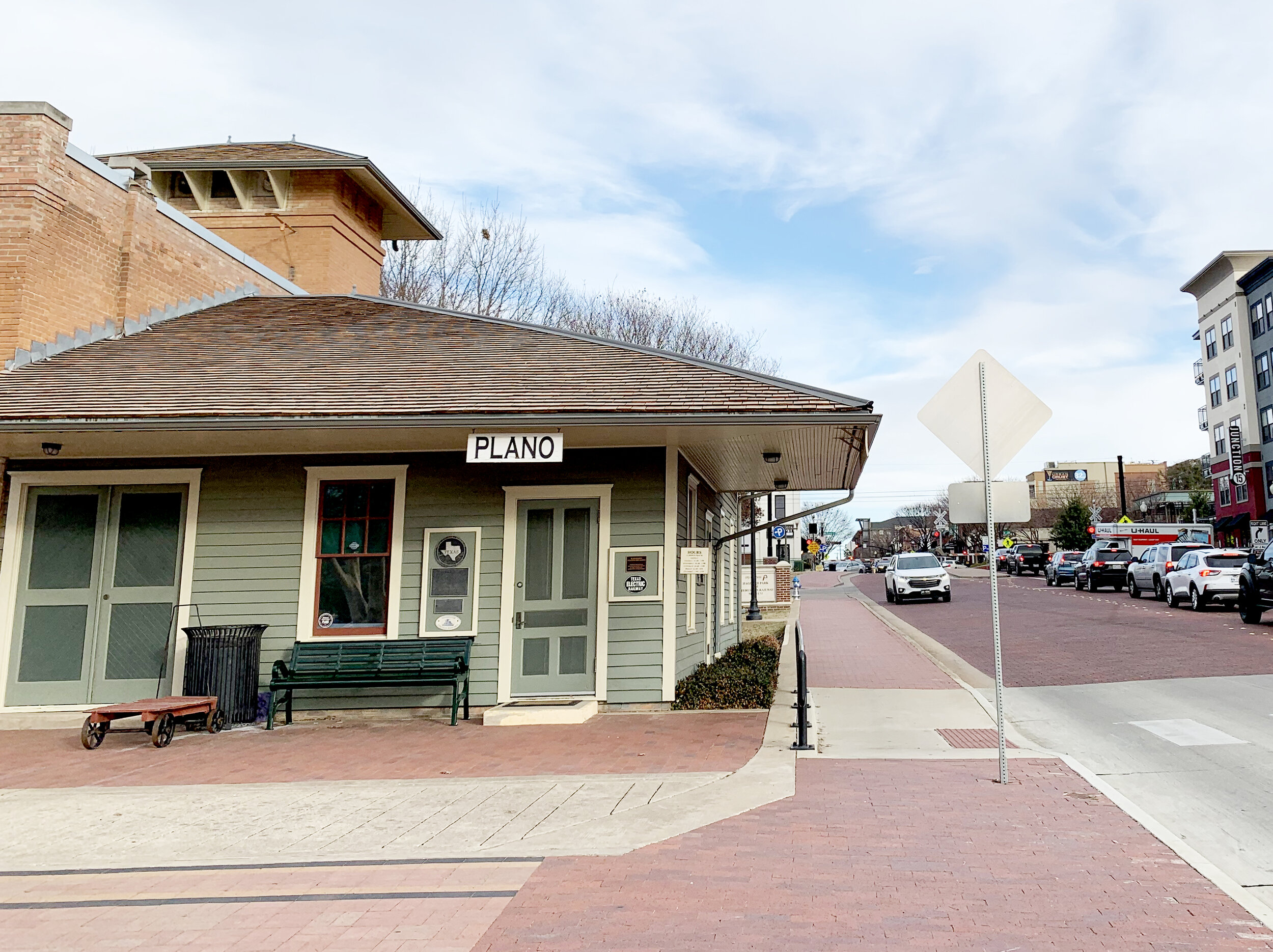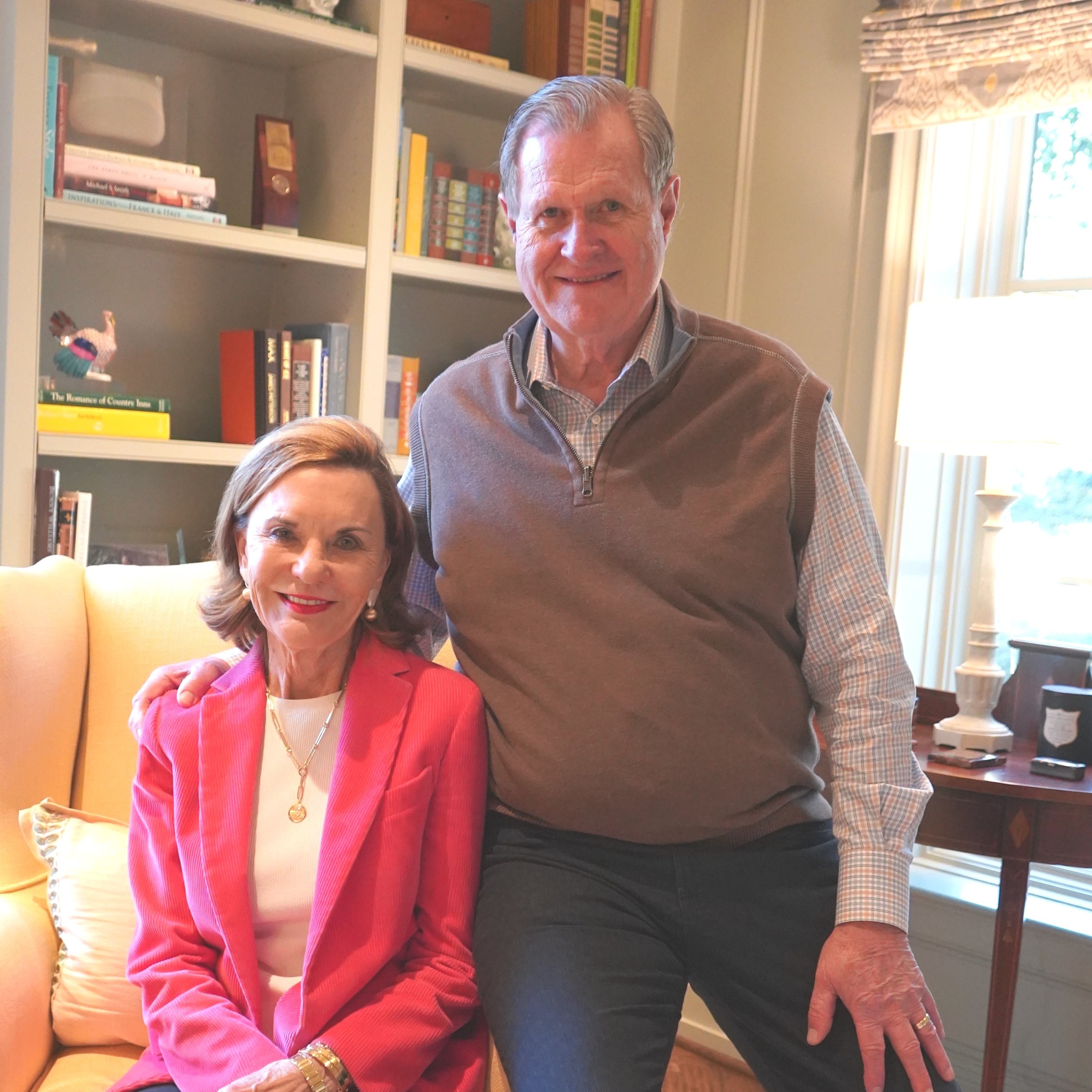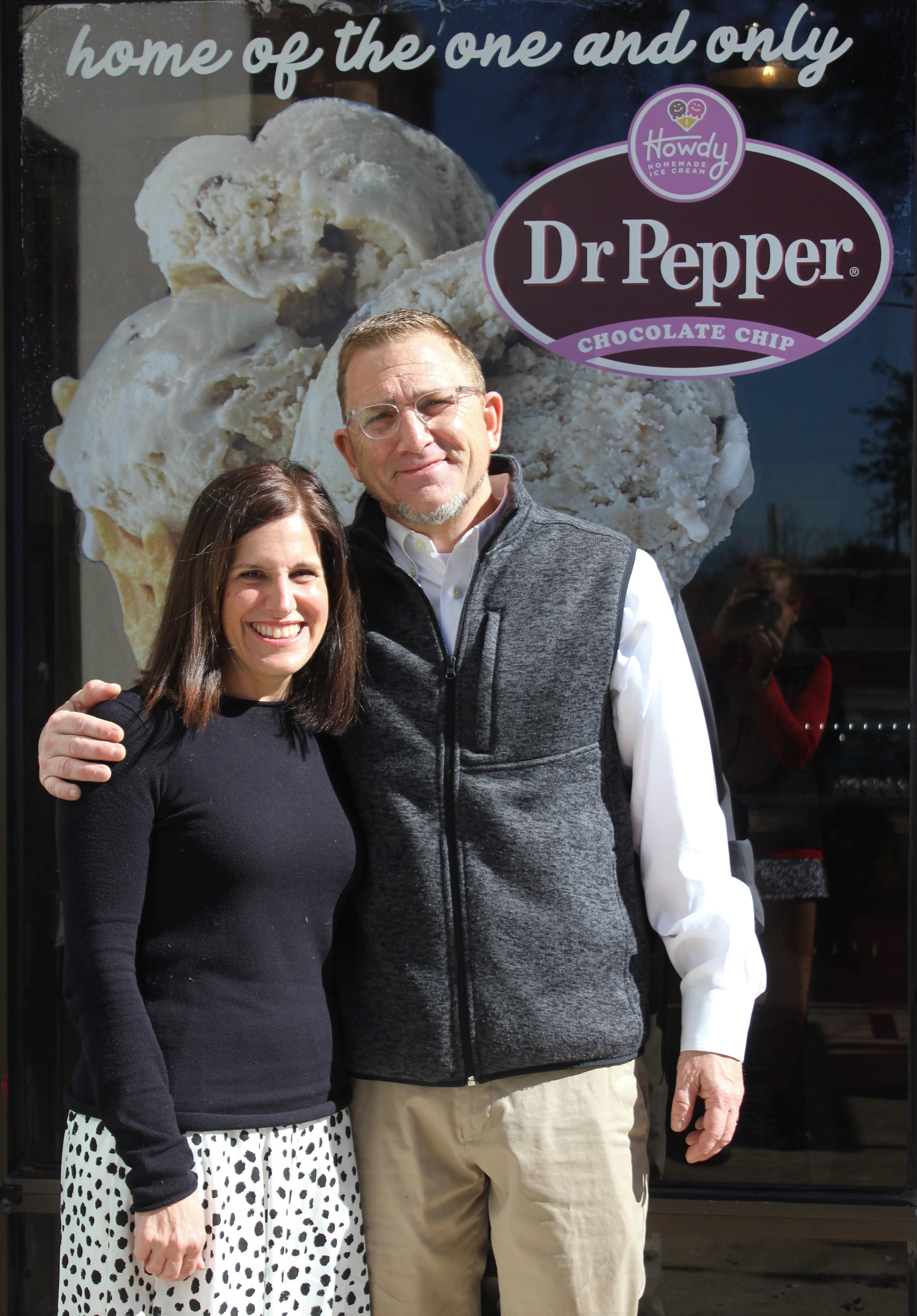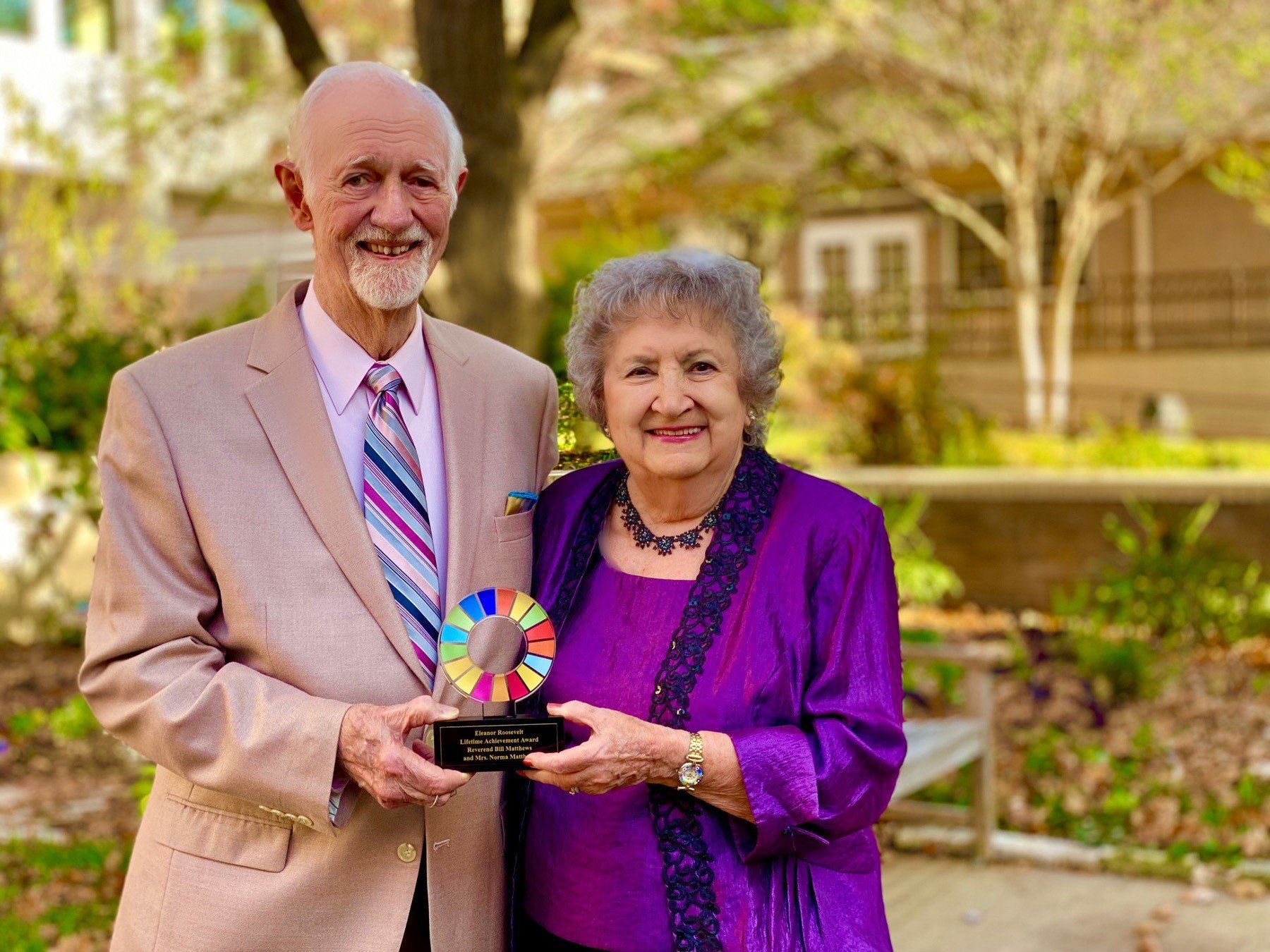Story by Mary Jacobs. Photos courtesy of Plano Conservancy for Historic Preservation.
As executive director of the Plano Conservancy for Historic Preservation, Jeff Campbell is always gratified to hear these four words: “I didn’t know that.”
Many visitors didn’t know that Plano’s storied history dates to the 1840s, when the first Anglo settlers arrived to farm the land. (It’s still not uncommon, Campbell says, to encounter people who think Plano didn’t exist at all until the 1980s.)
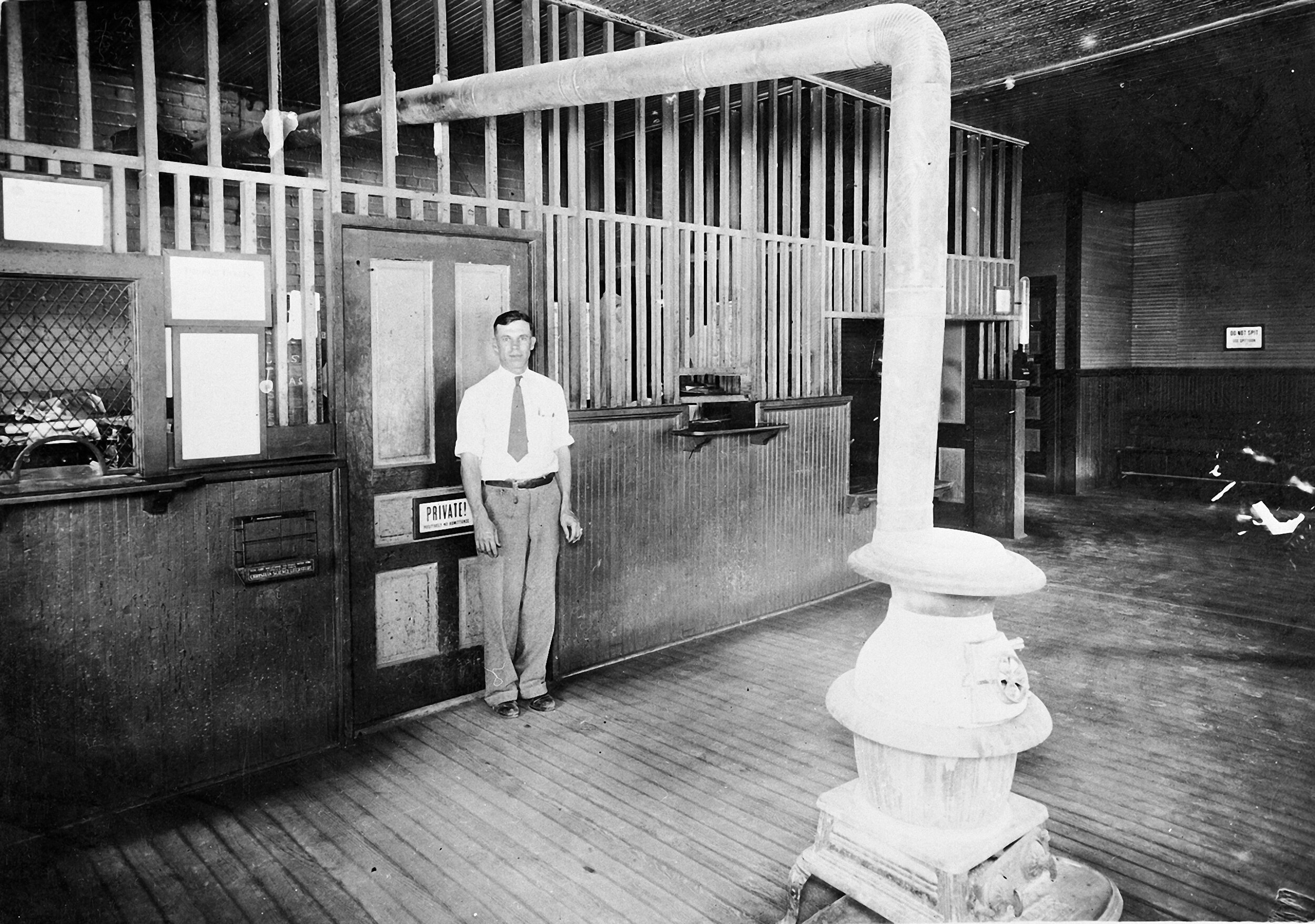
Interurban Station with Ticket Agent, circa 1930. Photo used with permission from the Genealogy Center, Plano Public Library System, Plano, Texas.
They didn’t know that the city’s historic downtown was once a bustling crossroads for the cotton industry (also dubbed the “Mule Capital of the World.)
Or that about a dozen pioneer cemeteries, dating back to the 19th century, dot the city in small plots tucked inside neighborhoods and behind apartment buildings.
“Plano didn’t fall out of the sky,” he says. “These early pioneers were the people who laid the foundation for those of us who came later.”
As the Conservancy celebrates it 20th anniversary in 2021, Campbell’s job is keeping that rich history alive.
The nonprofit began with the vision of the late Russ Kissick, a retired Plano businessman who was dismayed to discover that schoolkids in Plano knew nothing about the history of their hometown. Along with Maggie Sprague, a local history volunteer, and Sid Wall, an architect, Kissick set out to change that. The three founded the Conservancy in 2001, with the mission of “promoting civic pride in the past, increasing preservation awareness and preserving heritage resources for current and future generations.”
Russ Kissick (left) and Harold Larson (right) in 2016.
Since then, thousands of visitors have strolled through the Interurban Railway Museum, the Conservancy’s home base in downtown Plano. Schoolchildren from Plano and surrounding communities stream through for field trips. Kids from schools in Dallas ride the DART Rail, which stops nearby, and learn about rail history at the museum. Children with autism enjoy the museum’s model trains and explore hands on exhibits as part of a special program called Tracks for Kids. (Many children with autism are fascinated by trains.)
Funding for the Conservancy comes from the city of Plano’s Heritage Commission, grants and individual donations. The museum’s historic building is owned by the city of Plano and operated by the Conservancy. Originally, the museum’s building was a station for the Texas Electric Railway, which carried passengers from Denison, Plano, Dallas, Waco and points in between from 1908 until 1948. The Mission Revival/Spanish Revival style structure was added to the National Register of Historic Places in 2005, and also displays Car 360, a restored Texas Electric Railway car, on the grounds.
The museum has been closed much of the past year, due to the pandemic, but pre-COVID, the Conservancy hosted annual events like the Archaeology Fair in nearby Haggard Park; Hike Through History, a downtown walking tour highlighting historic homes, buildings and points of interest; and Tombstone Mysteries, a community workday to clean and restore tombstones in historic cemeteries. These events do more than just teach people about local history, Campbell says.
Outside the Plano Interurban Railway Museum.
“We have a wide cross section of people who show up to volunteer, to help clean the tombstones and just to be a part of the effort,” he says. “It really builds a sense of community.”
During the pandemic, with most in-person events on hold, the Conservancy pivoted adapted with online and “do-it-yourself” activities, including a photography contest, a Haiku Through History poetry contest, and a Haunted Plano scavenger hunt, in which residents tracked down spooky and “hidden” historic spots around town. Outdoor exhibits on Plano history, train wrecks and the the Texas Motorwomen allowed visitors to learn about history while safely socially-distancing.
The Conservancy has also published half a dozen books, including chronicles of Plano history, Plano’s historic cemeteries, and the story of the integration of the Plano ISD football program in the 1960s.
Over the years, Conservancy developed two areas of specialization: cemetery restoration and railway history.
Jeff Campbell with a 2011 Preservation Texas Honor Award for the Plano Conservancy’s work in Davis Cemetery.
As a leading advocate for historic cemeteries in North Texas, the Conservancy shepherded restoration projects in Plano and Collin County. In 2019, Preservation Texas recognized the Conservancy with an Honor Award for its work in Davis Cemetery, a historically African American cemetery near downtown. This past holiday season, the Conservancy participated in Wreaths Across America, a nationwide effort honoring deceased veterans. Graves of many of the veterans buried in Plano—including one from the War of 1812—were decorated with a wreath.
The enthusiasm of railfans—those interested in the history of trains and railroads—has extended the Conservancy’s reach nationally. One of the Interurban’s original exhibits, Vital to Victory, telling the story of women who worked as conductors on the nation’s passenger railroads starting in World War I, is now on loan to a railway museum in Michigan.
Campbell joined the Conservancy in 2013 and became Executive Director in 2017. His own career started with many years in the electrical construction business, where he developed a love of history and preservation. After a stint with the Texas Historical Commission, he worked as a tourism director in East Texas.
“Living in a small town, you realize you miss two things: Taco Cabana and Half Price Books,” he says. He jumped on the chance to return to the Dallas-Fort Worth area when the opportunity arose in Plano.
Campbell is assisted by four part-time staffers, a contractor who manages the archives, and a small army of volunteers. Two longtime volunteer “Traveling Motormen,” Harold Larson and Jack Durnin, lead tours at the museum, visit schools to talk about railroad history, maintain the museum’s model train system, and teach Railroad & Electricity merit badges to Scouts.
Now, Campbell is hoping to expand the Conservancy’s focus from the early pioneer farmers, who first came to work the area’s rich blackland prairie, to tell the more recent history of Plano’s evolution. The suburban expansion began in the 1960s, with the building of the Texas Pool (a Texas-shaped pool located in central Plano) as part of North Dallas Estates, the first major housing development in Plano.
The Conservancy participates in events in nearby Haggard Park, such as Asia Fest and the International Festival, which celebrate the Plano’s diversity and rapidly growing Asian population. (Both are currently on hold due to COVID-19.)
“We’ve told the pioneer history, but we also want to tell the story of how we got from the days when Plano was a farming community to Plano as an international city,” he says. “That has a lot to do with the arrival of companies like Texas Instruments, EDS and Toyota.
“We want to keep telling that story.”
Featured
Mary Jacobs is a freelance writer who writes regularly for The Dallas Morning News, The Silver Century and other outlets as well as for clients such as Southern Methodist University and The Arbor Company. She is co-author of Hidden History of Plano (History Press, 2020) and author of Haunted Plano, Texas (History Press, 2018). A graduate of Leadership Plano Class 31, Mary and her husband, Steve Lavine, have four grown children and live in Plano in a home ruled by a 5-lb. Yorkie.
More Good Stories
Featured
When Kathy and Larry Helm heard about The Senior Source’s 60th Birthday Diamond Dance-Off, they knew they had to put on their dancing shoes! For the Helms, this event combined two of their passions into one. Celebrating and supporting The Senior Source, a Dallas-area nonprofit that has been serving older adults for 60 years, and dancing together, which they have been doing since they were high school sweethearts. Both Kathy and Larry have chaired the board of directors of The Senior Source and have been proud supporters since 1998. It seemed only fitting they should be voted into the finals to dance on stage at Klyde Warren Park this past summer.
In 2020, more than 912,000 women were diagnosed with some form of cancer in the United States alone. During that same pandemic year, countless medical appointments were canceled while people were social distancing, and yet still each day nearly 2,500 women heard the news, “you have cancer.” There is no doubt that these words can be crushing to hear, but what’s equally crushing is the lack of tangible, encouraging support that exists to help women feel beautiful, strong or “normal” before, during and after cancer treatment.
When Tom Landis opened the doors to Howdy Homemade in 2015, he didn’t have a business plan. He had a people plan. And by creating a space where teens and adults with disabilities can find meaningful employment, he is impacting lives throughout our community and challenging business leaders to become more inclusive in their hiring practices.
Have you ever met someone with great energy and just inspired you to be a better you? Nitashia Johnson is a creator who believes by showing the love and beauty in the world it will be contagious and make an impact. She is an encourager and knows what “never give up” means. Nitashia is a multimedia artist who works in photography, video, visual arts and graphic design. Her spirit for art and teaching is abundant and the city of Dallas is fortunate to have her in the community.
The United Nations Association Dallas Chapter (DUNA) honored Rev. Bill and Norma Matthews for their ongoing commitment, helping advance the United Nations Sustainable Development Goals agenda by promoting peace and well-being.
